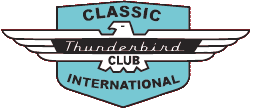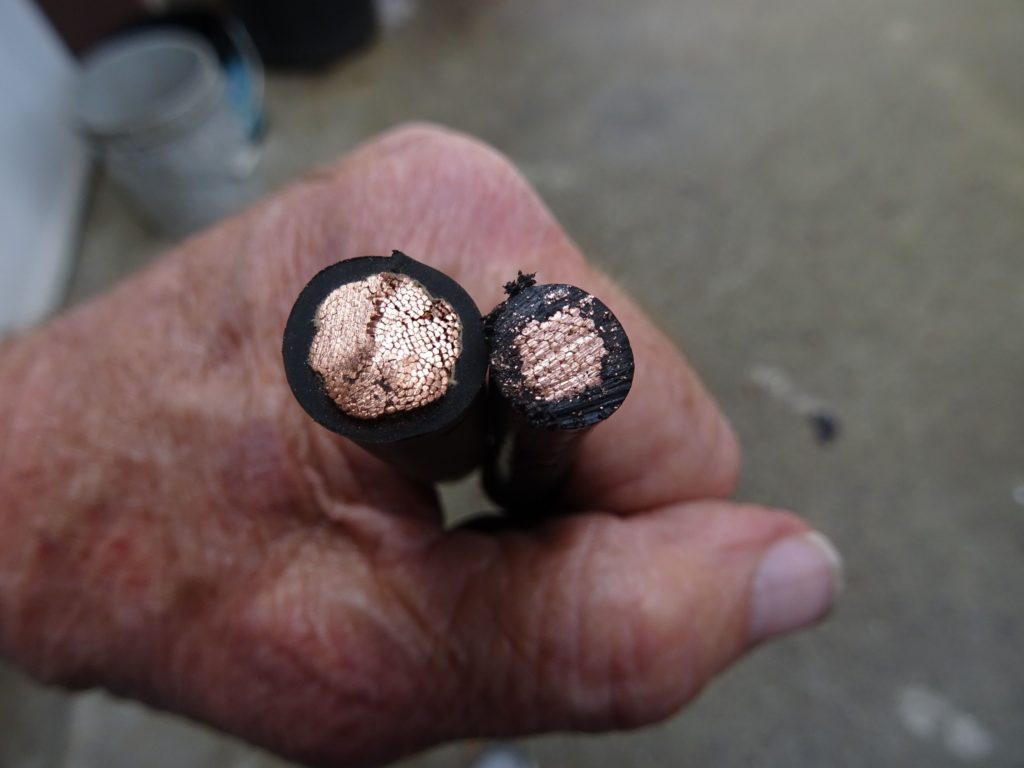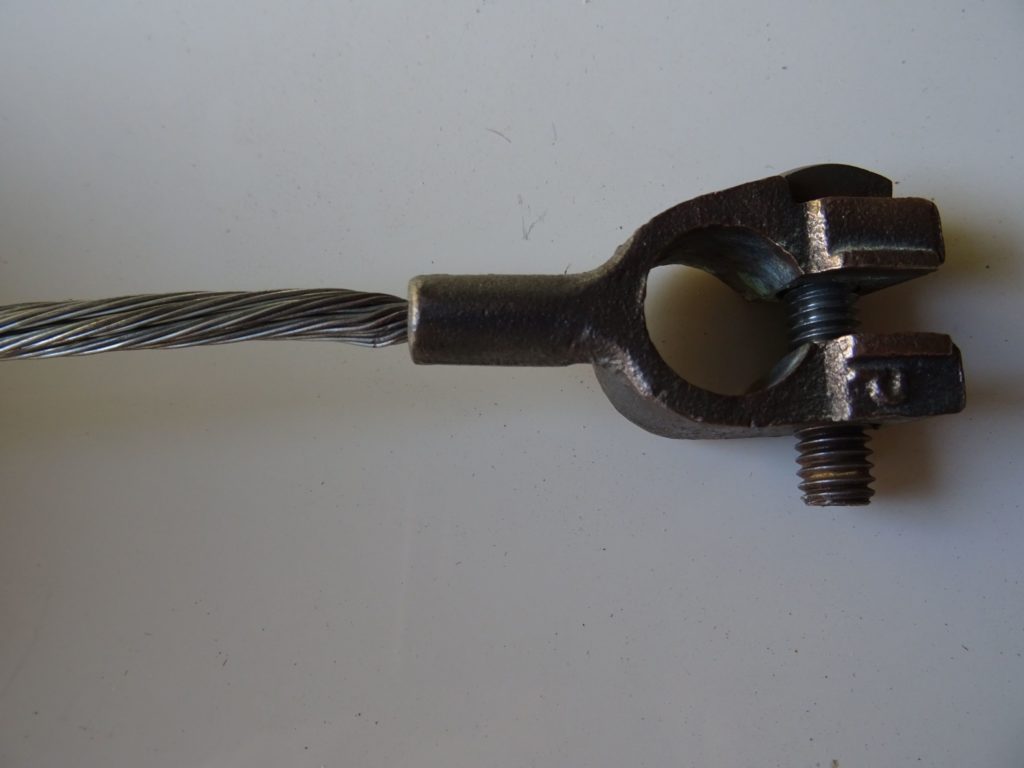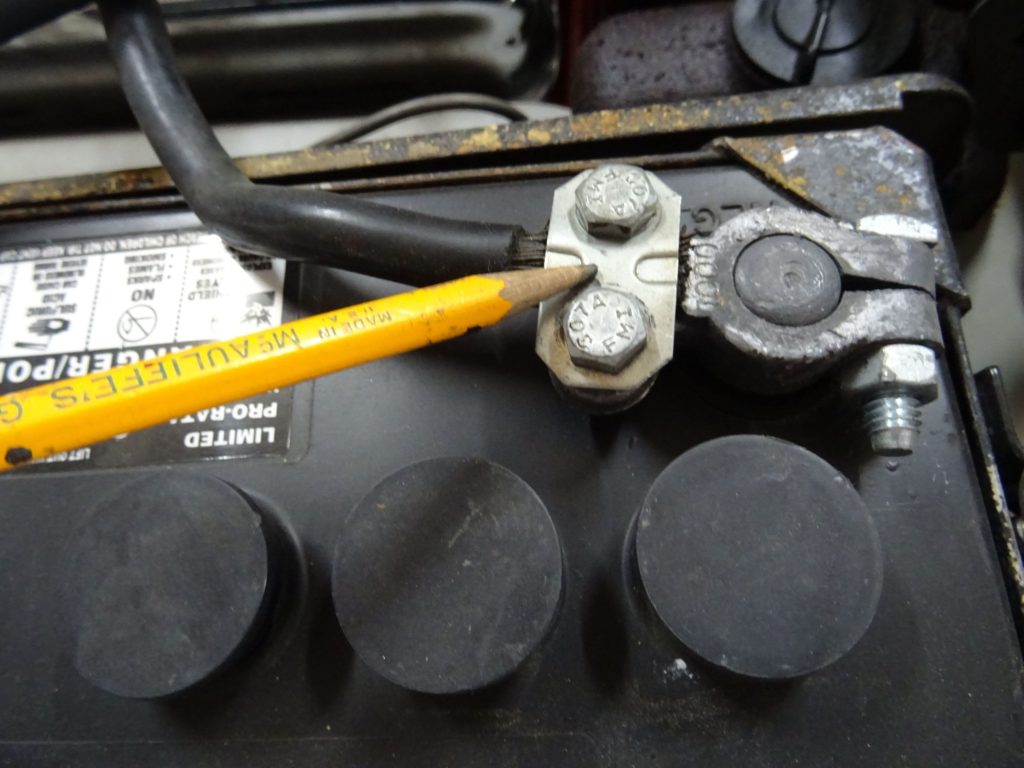 Gil’s Garage
Gil’s Garage
Gil Baumgartner
CTCI Authenticity Chairman
The importance of good battery cables, clean connections and good grounds are sometimes over looked and cannot be over emphasized. Battery cables provide voltage and amperage for starting, ignition and all other electrical components.
1955 model Thunderbirds originally had a 6 volt electrical system. When they were new and all the electrical connections were new, clean and tight they started and ran very well. The cables positive and ground were large # 1 gauge and would carry enough amperage (volume of current) to always start and deliver peak performance.
Starting with the 1956 models all Thunderbirds and other Ford vehicles had a 12 volt system. Due to the voltage being doubled the size of the battery cables could be reduced to # 4 gauge without the loss of amperage to the starter and other components. In 1956 the ground from the battery was connected to the engine block as was the 1955 6 volt system. The engine was then grounded to the fire wall with a short cable attached to the engine left cylinder head on both the 1955 and 1956 models.
Starting in 1957 the Thunderbird battery to ground cable was attached to a threaded stud on the firewall just aft of the battery, then about 14 inches inboard a short # 4 gauge cable was attached to a threaded stud from the fire wall to the left cylinder head, in other words before the battery was grounded to the engine it ran through the firewall, which is not as efficient as a direct ground from the battery to the engine block which would provide a better ground for the starter.
Photo # 1 shows a # 1 gauge cable left and a # 4 gauge cable right. As you can see the # 1 gauge is twice the size and will carry twice the amperage to the starter and other components.
Photo # 2 shows an import reproductions # 4 gauge cable using aluminum strands instead of copper – not good, not good at all – aluminum is a poor conductor of electricity and will provide about half the current (amperage) to the starter. This combined with other defects that will be addressed in the next paragraph has the potential to deliver low current to the starter as well as voltage spikes which can contribute to failure of electronic ignition systems (PERTRONIX).
As our cars age, corrosion, loose connections and poor quality parts, worn starters as well as poor maintenance contribute to poor starting and overall performance. A condition sometimes referred to as starter drag occurs as the bushings in the starter wear allowing the armature to drag on the starter field coils. This condition requires more amperage from the battery resulting in slower cranking of the engine which is especially critical with the 1955 6 volt systems.
Some of you may have experienced an engine that would not fire when the starter was engaged. It would fire as soon as the ignition key was released, sounds strange, but it has happened. When this happens the starter is using all the current and starving the voltage to the ignition. The instant the key is released voltage is sent to the coil and the engine starts.
Stay away from discount store cables – they may have aluminum strands. Quality cables can be purchased from major auto parts stores such as NAPA. In addition, bulk cable and ends can also be purchased from NAPA, and some stores will also make cables to your specified length with properly crimped ends which is very important. Never use a cable end that is clamped as shown in photo # 3. It will not properly contact the cable and is a hot bed for corrosion.
Bottom line your electrical system requires quality copper strand battery cables. Unless you are building a high quality show car I recommend using # 1 gauge cables on all models. If you are building a show car then make sure you have the proper size with copper strands.
In addition review page 35 of the March/April 2016 Early Bird or Gil’s Garage at www.ctci.org for information on the correct engine to firewall ground.
I also recommend a 68 page booklet titled “HELP! MY CAR WON’T START WHEN IT’S HOT!” by Randy Rundle available from Fifth Avenue Antique Auto Parts, 415 Court, Clay Center, KS 67432. PH 785-632-3450.
Gil Baumgartner



